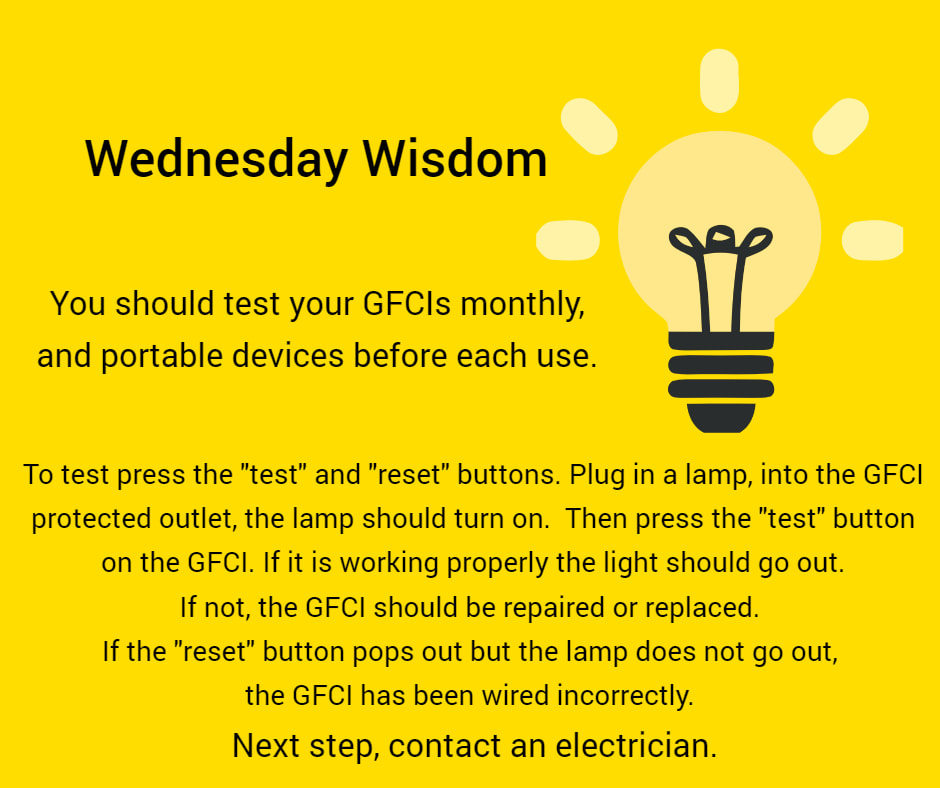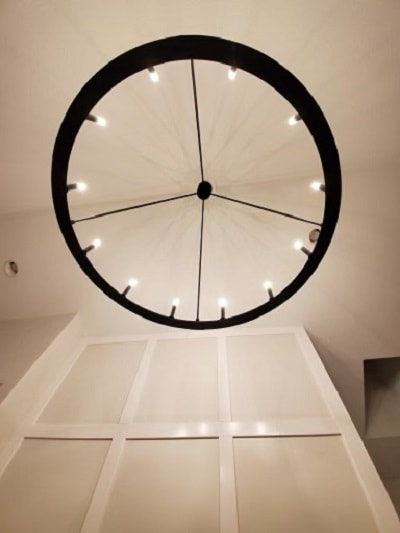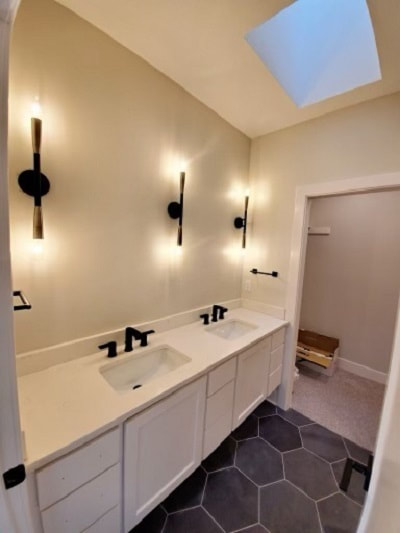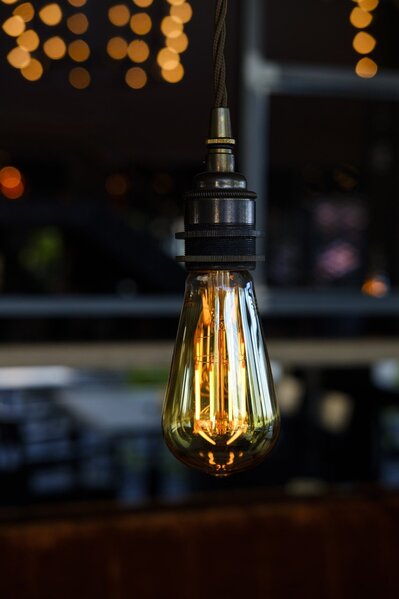 Vintage will never go out of fashion. ... The modern homeowners are remodeling their lighting fixtures and replacing them with Edison bulbs for a more nostalgic feel. Give us a call, if you would like to install a new lighting fixture, at your home or office.
0 Comments
 The heat is on, so you might be wondering how much does a sprinkler system use? A typical irrigation system uses electricity to power the controller (timer) which turns the valves on and off. Some systems also use electricity to power a pump. A typical residential controller uses about 0.5 Kwh a day and a large commercial controller will use about 1.2 Kwh a day. We are electricians in the KC Metro, if you are having electrical issues at your residence or commercial space, we are ready to help you. 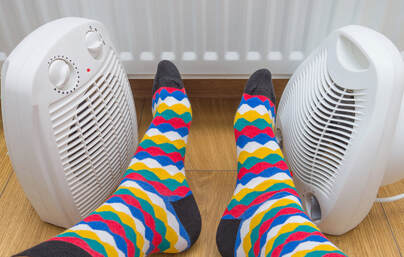 It turns out, there are many factors to consider when sizing a space heater. But we’ll assume two: Supplemental heat: The room is heated, but inadequately, so you want to boost heat by up to 10 degrees Fahrenheit.
500 watts: Up to 50 square feet (5x10, 7x7) – Bathroom, cubicle, desktop, and other personal uses 750 watts: Up to 75 square feet (7.5x10, 8x9) – Bathroom, small office, or small bedroom 1000 watts: Up to 100 square feet (10x10, 12x8) – Large bathroom, den, office, small bedroom, galley kitchen or dorm room 1500 watts: Up to 150 square feet (10x15, 12x12) – Bedroom, office, kitchen, small living room 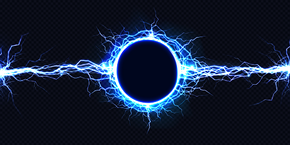 Can a Power Cut Damage Your PC? So, can a sudden drop in power cause problems for your PC? As it turns out, yes, both for your data and your hardware. How a Power Cut Can Damage Your Computer. The sudden shutdown after a blackout is the primary danger to a computer's health. Operating systems are complex, and they must go through a "shutdown sequence" to make sure all running processes have correctly terminated before powering off. How to Protect Against Power Outages. For protection against power outages, you need an uninterruptible power supply. This apparatus contains a backup battery that will continue to provide power to your computer even when your power goes out. UPS devices can also come equipped with surge-protected outlets, making them a useful two-for-one purchase. If you live in a building or location that frequently experiences outages, surges, or both, a UPS will be a strong investment. Using a Laptop to Work Through Outages If you instead want to continue working through a power cut, why not use a laptop? Laptops avoid the power outage problem entirely; when the electricity cuts out, it switches to the battery. Thank you to MUO.com We are sharing some of the information in an article by MUO.com, they are tech experts. They were founded in 2007.MUO has grown into one of the largest online technology publications on the web The complete article We are sharing some of the information in an article by MUO.com, they are tech experts. They were founded in 2007.MUO has grown into one of the largest online technology publications on the web The complete article http://bit.ly/3jDwRZL  KATELA MORAN ESCOBAR has always dreamed of being a homeowner, but she never imagined her first house would double as an energy experiment. Last July, Escobar and her family moved into Basalt Vista, a new affordable housing project in the small town of Basalt, Colorado, just north of Aspen. The development is a bulwark against the skyrocketing housing prices in Roaring Fork Valley, but it’s also a living laboratory to test advanced power grid technologies that could turn every home into an appendage of a decentralized power plant. Basalt Vista is designed to be an all-electric community that produces as much power as it uses. Each home comes outfitted with an electric vehicle charger in the garage, a large battery pack in the basement, and a roof covered with solar panels. The homes are linked together as a microgrid, a self-contained electricity distribution network that can operate independently of the regional electric grid. Their energy systems work together to balance the energy load across the neighborhood—the solar panels harvest energy, plugged in EVs can store electricity as needed, and large battery packs can supply power when the sun isn’t shining. But what makes Basalt Vista’s microgrid unique is that it autonomously allocates power. There’s an internet-connected control box in the basement of each home running experimental software that continuously optimizes electricity distribution across the microgrid and the flow of energy to and from the larger regional grid. When one home produces more energy than it needs, it can autonomously make the decision to redistribute it to its neighbors or store it for later. “We don’t have to deal with any of the machinery,” says Escobar. “The house works all by itself.” Basalt Vista is a testbed for a so-called “virtual power plant,” a network of self-optimizing energy resources that unbundles the centralized utility and distributes it across the grid. Like microgrids, virtual power plants consist of distributed energy systems such as rooftop solar panels, EV chargers, and battery packs. The difference is virtual power plants aren’t really designed to disconnect from the greater grid. Instead, they aggregate and control distributed energy sources so they can perform the functions of a large centralized power plant—generating and storing electricity—for the wider grid. This virtual power plant could serve as an antidote to the inherent variability of renewable energy systems by efficiently matching supply and demand across widely-distributed electricity producers and consumers. For now, the technology exists in the basements of Escobar and her neighbors at Basalt Vista. But if the experiment is successful, it may one day control power for millions of other families. “Traditionally, we’ve delivered electric service over a one-way transmission and distribution grid from centralized power plants to relatively passive consumers,” says Bryan Hannegan, CEO of Holy Cross Energy, a small nonprofit utility that services Basalt, Aspen, and other nearby communities in Colorado. “That architecture is changing dramatically and consumers are now producing as well. Power plants are no longer large and centralized; they’re numerous and distributed.” wired.com We worked on this amazing Prairie Village home with a great local contractor.
This home has all new everything, including all the electrical wiring throughout. The lighting is everything from large iron chandeliers to scones, can lights and fans, and the outdoor lighting as well. A great project.  Whether you dream of a 12ft lighted Christmas tree, a house iced in blue and white lights, or colored lights covering the inside and outside of your home – light decorations have become a joyous way to illuminate the holiday season. And yet, I hear people all throughout the holidays questioning the cost of it all and their rising electric bill. This made me want to know… what is the actual cost of powering holiday lights? AnalysisTo figure out the cost of holiday lighting, we tested three kinds of lights:
Results – Mini LightsThe mini lights are good for both indoor and outdoor lighting. They come in strings of 100 and each string uses 0.039 kWh per hour and 0.95 kWh per day. If you are like me and leave the house in the morning when it is still dark and return after dark, you probably feel the desire to just leave your lights on all day. Unfortunately, that does drive the cost up considerably. That equals $3.82 per month for each string of lights. Now, considering that it takes 700 lights to fill a 7ft tree, 1,000 for a 10ft tree and as much as 2,000 for a 12ft tree, the cost of lighting substantially increases. Once you add this up, it could seem like a lot in extra expenses after buying the lights. But let’s see how this changes with LEDs. After plugging in the LEDs we found that they only consume 0.0045 kWh per hour. This comes to 0.11 kWh per day and 3.41 kWh per month. This means one strand only costs $0.44 per month. That is a savings of 88%! See how that savings impacts your tree’s lighting. Home automation can lead to even more savings. To still get to see my lights on when I leave for work and come home, I automated them using the Powerley app, to turn off when I leave the house at 8:00am and turn on when I am heading back home at 5:30pm. This reduces the time that they are consuming energy to 14.5 hours per day. By automating my Christmas lights, I saved another 40% on electricity. But what about when it comes to bigger lights that pull more energy? Results – Ceramic C7The Ceramic C7 bulbs are bigger lights and are great to get that traditional holiday feeling. The string of bulbs we used to test is 25ft long with 25 lights, meaning that you could need as much as 100 of these bigger bulbs to cover a 7ft tree. These lights draw 130 Watts constantly. This translates to 0.13 kWh per hour, or 3.16 kWh per day and 97.96 kWh per month, with an additional electrical cost of $12.73. But when using the four strings of lights needed to cover a 7ft tree, it goes up. For comparison, this is more than your monthly cost for a microwave, TV, and lighting for 4-5 rooms. With a 10ft tree, this would be around 150 lights, costing $75.43 per month. Upgrade to a 12ft tree with 200 lights and you are paying around $100.58 per month. While this is pretty expensive for holiday cheer, it doesn’t have to be. LEDs are known to reduce lighting expenses by 80-95%. Since moving from regular mini lights to mini LEDs reduced lighting expenses by 88%, the Ceramic C7 LEDs would most likely be the same. With that in mind, it would bring power usage down to 0.0156 kWh per hour. This equates to 0.38 kWh per day and 11.78 kWh per month. This would cost $1.53 per strand of light which brings monthly cost to only $6.12 with 100 lights, $9.18 with 150 lights, and $12.24 with 200 lights. Applying the adjusted time of use schedule to the C7 LED lights means that power usage goes down to only 7.01 kWh a month per stand of lights which cost just $0.91. This means lighting a 7ft tree would only cost $3.64 per month. Lighting a 10ft tree would cost $5.64 per month. And lighting a 12ft tree would cost $7.28 per month. This increases to an almost 93% savings compared to regular C7 lights running all day! So, the answer . . . Christmas lights don’t have to use a lot of energy. By using LED lights and putting your lights on an automated schedule, you can reduce the cost of holiday lighting to have a minimal impact on your electrical bill. https://powerley.com/myth-buster-do-christmas-lights-use-a-lot-of-electricity/ 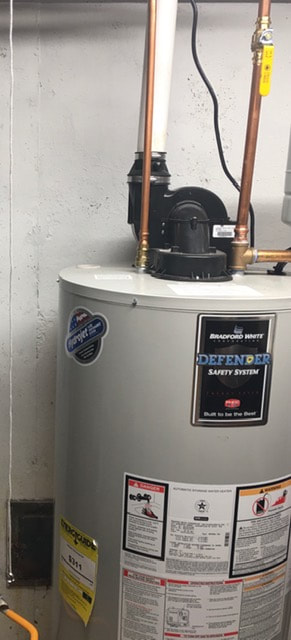 Are you having water heating problems lately? Are you confused about whether the problem is the equipment, the water line or the electrical line? Well, this is a common problem, and many individuals are left in the lurch about calling the plumber, electrician or the HVAC tech. So, what is the solution? The solution is dependent on the issue, as our experts point out for you in the following section of the article. Ideally, for the most part, you should be calling your plumber for water heater except in certain special scenarios. So, what are the specific problems for a water heater that requires a plumber? When to call a plumber? Let us have a look, No hot water So, just when you wanted to take an energizing hot shower, you find out that the heater is not working even after you have had it switched on this whole time! Don’t get forced into having a cold shower. Call your plumber right away. A word of advice; check if you can remedy the problem by adjusting the thermostat if not the heating unit needs to be replaced. Leaking water heater A water heater is supposed to supply hot water inside the house and should you find hot water anywhere outside your property then it might mean there is a leak in the plumbing lines. A leak in the heating unit may lead to the formation of a pool of water around the base of the device which may lead to serious accidents. Heater tank rust You can either have rust in the water itself due to rusted lines and fixtures or accumulation of rust in the tank of the heater itself. Call your plumber at once for these troublesome hassles. Is your water heater over ten years old? Water heaters generally last for over eight years. If your heater is around this age, then chances are it won’t be working as efficiently as it should. This will lead to increased power consumption and heating bills. Your plumber can guide you better about repairing and servicing or a complete replacement of the water heater unit. A key aspect to consider Always make sure that your plumber is licensed. It is illegal for a plumbing service to operate in an area without the proper licensure. A properly certified plumber is trained to handle almost any water heater problems including electrical wiring, piping, anode rods and gas lines. Some more problems that require a plumber
Call an electrician if,
askpreeto.com May 2019  The History of Electricity
|
|

